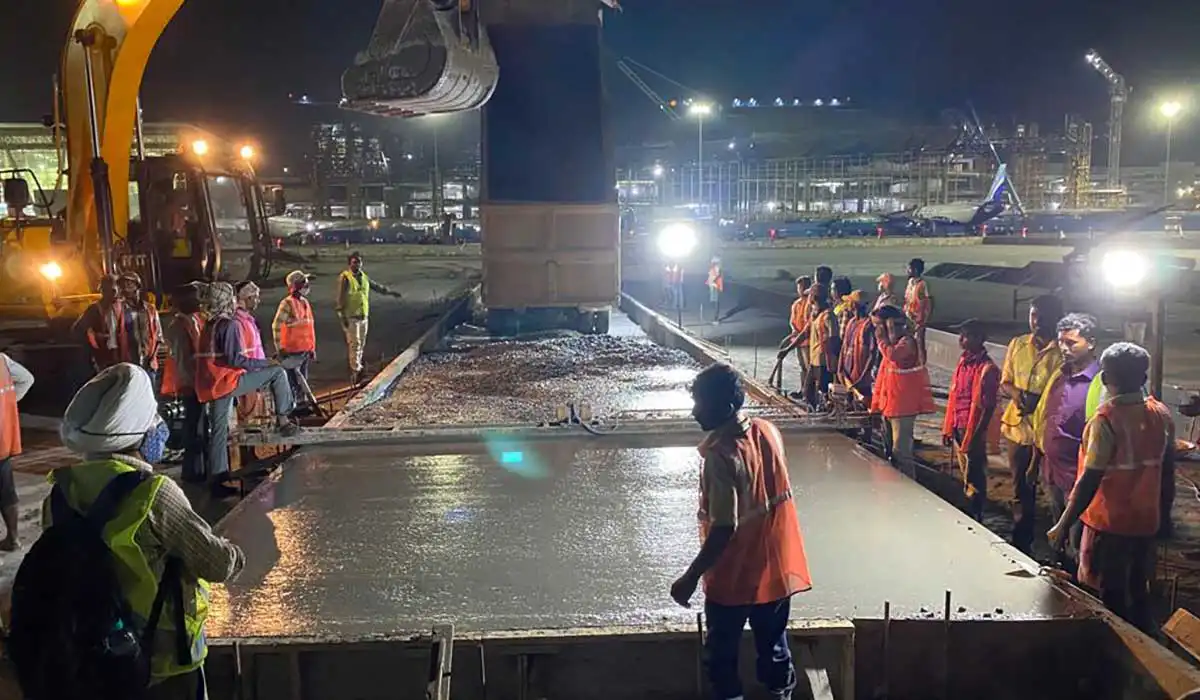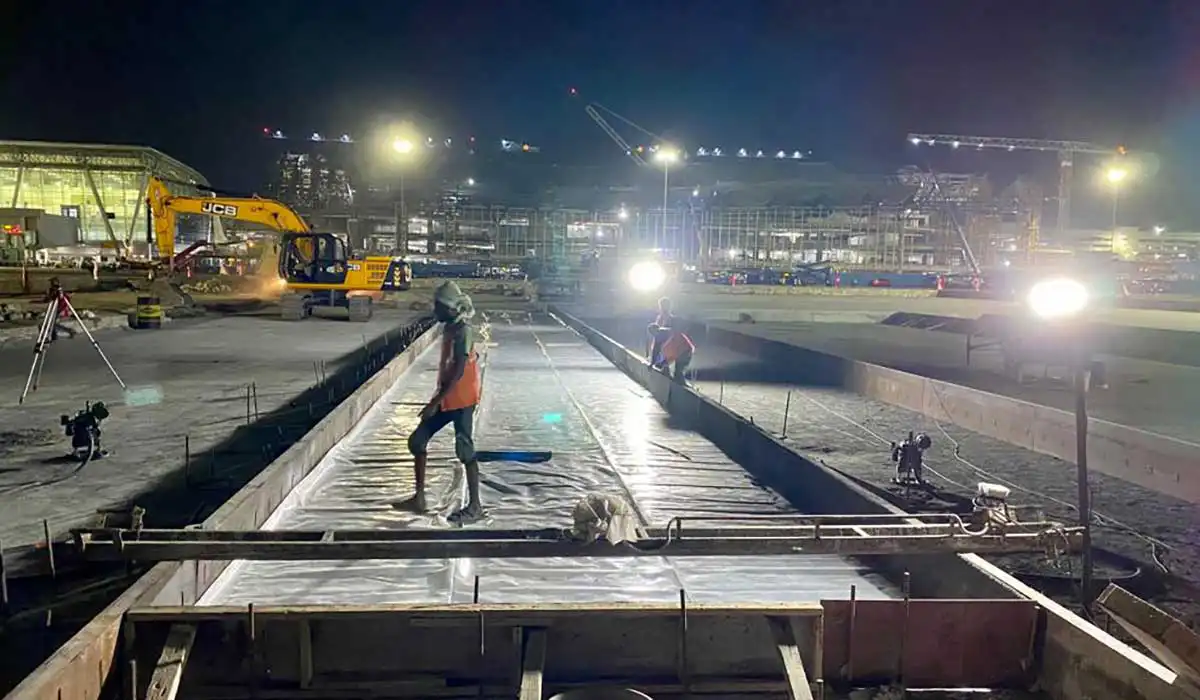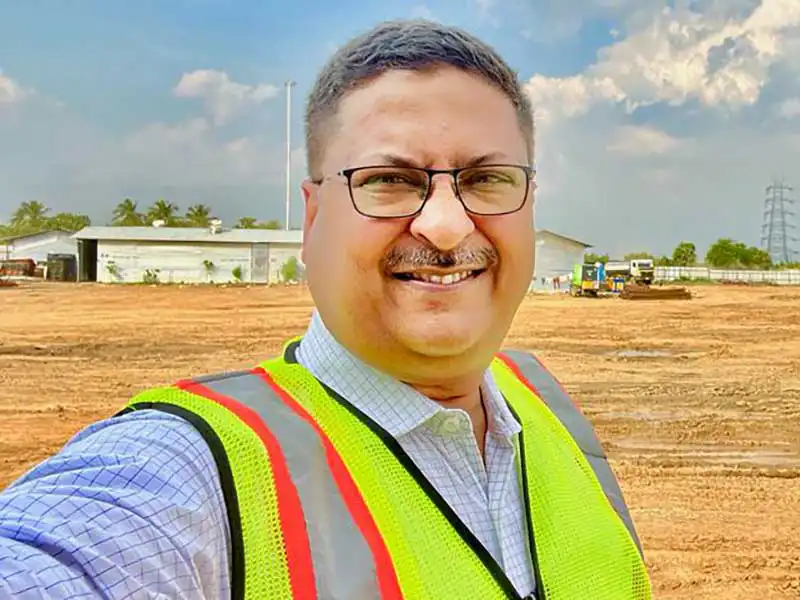Top 50 Applications of GGBFS as a Smart Building Material
A byproduct of the steel manufacturing process, GGBFS is widely used in the construction industry for its special characteristics that make it a valuable addition to building materials, particularly when durability and long-term performance are critical factors. By reducing permeability, mitigating ASR, and enhancing resistance to sulphate attack, GGBFS helps create more robust and long-lasting structures.
Abinash Mishra, Executive Director, Dalmia Cement Bharat Limited
Construction has been greatly impacted by GGBFS (Ground Granulated Blast Furnace Slag) - a steel byproduct that improves concrete and cement-based materials. Its outstanding pozzolanic and hydraulic properties affect concrete’s strength, durability, and resistance, especially in severe environments. GGBFS is used in buildings, bridges, walkways, and homes, demonstrating its adaptability and offering many construction benefits:



Abinash Mishra, Executive Director, Dalmia Cement Bharat Limited
Construction has been greatly impacted by GGBFS (Ground Granulated Blast Furnace Slag) - a steel byproduct that improves concrete and cement-based materials. Its outstanding pozzolanic and hydraulic properties affect concrete’s strength, durability, and resistance, especially in severe environments. GGBFS is used in buildings, bridges, walkways, and homes, demonstrating its adaptability and offering many construction benefits:
- Its capacity to minimize hydration heat can avoid cracking.
- Makes construction material easier to handle and shape - features that make GGBFS useful in high-performance, sustainable construction projects.
- GGBFS is known for its sustainability, which includes reducing greenhouse gas emissions, conserving natural resources, and diverting industrial waste from landfills.
- Helps build resilient, eco-friendly, attractive structures, making it a wonderful material in modern constructions where creativity and sustainability are emphasized.

Applications
These top applications of GGBFS in the construction industry highlight the versatility and sustainability of GGBFS in various building projects.- Concrete Production: Replacing a portion of cement with GGBFS in concrete mixes improves durability and reduces the carbon footprint.
- High-Performance Concrete: GGBFS enhances the strength and durability of high-performance concrete used in bridges, dams, and skyscrapers.
- Reduced Heat of Hydration: It reduces the heat generated during concrete curing, minimizing the risk of thermal cracking.
- Sustainable Construction: GGBFS promotes sustainability by utilizing waste products and reducing the demand for raw materials.
- Concrete Blocks: GGBFS can produce concrete blocks, reducing their weight and increasing insulation properties.
- Precast Concrete: Precast elements like beams, columns, and panels benefit from improved workability and reduced permeability when using GGBFS.
- Concrete Pavements: GGBFS is used in road construction to enhance the durability and reduce maintenance of concrete pavements.
- Self-Compacting Concrete: It improves the flowability and workability of self-compacting concrete, reducing the need for excessive vibration.
- Marine Structures: GGBFS concrete is resistant to sulfate attack and is commonly used in marine structures like docks and harbors.
- Corrosion Resistance: GGBFS-based concrete provides better protection against corrosion of embedded steel reinforcement.
- Tunnel Linings: It is used in tunnel construction for its low permeability and high strength.
- Hydraulic Structures: Dams, spillways, and hydraulic structures benefit from GGBFS’s chemical and physical deterioration resistance.
- Airport Runways: GGBFS concrete is used in airport runways for its high compressive strength and resistance to abrasion.
- Bridges: GGBFS enhances the durability and longevity of bridges, particularly in aggressive environments.
- Highway Overlays: It is used in highway overlays to improve the resistance to freeze-thaw cycles and road salt.
- Railway Sleepers: GGBFS can be used in the production of railway sleepers for its durability and reduced maintenance.
- Retaining Walls: GGBFS concrete is used in retaining walls for its strength and resistance to soil pressure.
- Wastewater Infrastructure: GGBFS is used in wastewater treatment facilities due to its resistance to aggressive chemicals.
- Sewer Pipes: GGBFS is used in the production of sewer pipes to increase their resistance to corrosion.
- Underground Structures: It is used in underground construction due to its resistance to aggressive groundwater.
- Geopolymer Concrete: GGBFS is used in geopolymer concrete, which has lower greenhouse gas emissions compared to traditional concrete.
- Concrete Repair: GGBFS-based repair mortars are used to repair and rehabilitate deteriorated concrete structures.
- Fire Resistance: GGBFS concrete offers improved fire resistance properties.
- Sound Barriers: Precast sound barriers are often made with GGBFS concrete for highway noise reduction.
- Green Roofs: GGBFS lightweight concrete is used for green roof construction.
- Pervious Concrete: It can be used in pervious concrete mixes for sustainable stormwater management.
- High-Rise Buildings: GGBFS enhances the performance of concrete in high-rise buildings by reducing shrinkage and cracking.
- Stadiums and Arenas: GGBFS concrete is used in sports facility construction for its durability.
- Residential Construction: It can be used in residential construction for foundations, driveways, and more.
- Parking Structures: GGBFS-based concrete is commonly used in multi-story parking structures.
- Wind Turbine Foundations: The durability and strength of GGBFS concrete make it suitable for wind turbine foundations.
- Culverts: GGBFS-based concrete culverts are durable and resistant to soil erosion.
- Flood Barriers: GGBFS is used to construct flood barriers for its resistance to water damage.
- Soundproofing Walls: GGBFS concrete panels are used for soundproofing in buildings.
- Cisterns and Water Tanks: It is used to construct water storage tanks and cisterns.
- Seismic-Resistant Structures: GGBFS improves the flexibility and seismic resistance of structures.
- Low-Energy Buildings: It can contribute to constructing energy-efficient buildings due to its thermal properties.
- Tilt-Up Construction: GGBFS is used in tilt-up concrete panel construction for commercial buildings.
- Facades: Architectural precast panels made with GGBFS offer design flexibility and durability.
- Historic Restoration: GGBFS is used in the restoration of historic concrete structures.
- Eco-Friendly Buildings: It contributes to the construction of environmentally friendly and sustainable buildings.
- Solar Farms: GGBFS can be used in the construction of foundations for solar panels.
- Waterfront Structures: It is used in the construction of waterfront properties for its resistance to saltwater.
- Erosion Control: GGBFS can be used in erosion control measures along coastlines and riverbanks.
- Cold-Weather Construction: It improves concrete performance in cold climates by reducing freezing and thawing damage.
- Agricultural Structures: GGBFS concrete is used to construct agricultural facilities like silos and barns.
- Chemical Storage: It is used to construct chemical storage tanks due to its chemical resistance.
- Sports Facilities: GGBFS-based concrete is used to construct sports stadiums and arenas.
- Aquariums: GGBFS concrete is used in aquarium construction for its resistance to saltwater.
- Green Building Certification: GGBFS can contribute to achieving green building certifications like LEED by reducing environmental impact.

What makes GGBFS a Smart Building Material?
GGBFS is widely regarded as an effective durability enhancer in building materials due to its several unique characteristics:- Reduced Permeability: GGBFS significantly reduces the permeability of concrete and mortar. This is crucial for enhancing durability because lower permeability means reduced water ingress, which minimizes the risk of freeze-thaw damage, corrosion of reinforcement, and chemical attack. It is precious in structures exposed to aggressive environments, such as marine or industrial settings.
- Alkali-Silica Reactivity (ASR) Mitigation: GGBFS can mitigate ASR. This chemical reaction can cause cracking and damage in concrete due to the interaction between cement alkalis and certain aggregates. Incorporating GGBFS reduces the risk of ASR, leading to increased long-term durability and structural integrity.
- Increased Resistance to Sulfate Attack: GGBFS enhances concrete’s resistance to sulfate attack, essential in environments where exposure to sulfate ions, typically found in soil and groundwater, can lead to the deterioration of concrete structures. Incorporating GGBFS helps protect the factual matrix from the harmful effects of sulfate ions, extending the system’s lifespan.


About the author
Abinash Mishra, an MTech in Construction Engineering and Management, is an alumnus of IIT Bombay and Olin Business School. He has held leadership positions in building and construction material manufacturing companies and now spearheads the GO-Blended Initiative at Dalmia Cement Bharat Limited. The ground breaking GO Blended Initiative seeks to significantly lower carbon emissions by advocating blended cement over OPC to infrastructure clients.
ICCT - September - October 2023
















